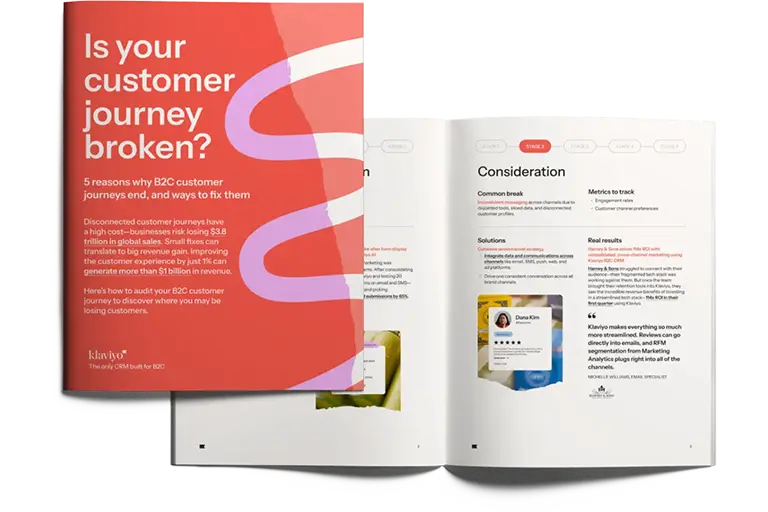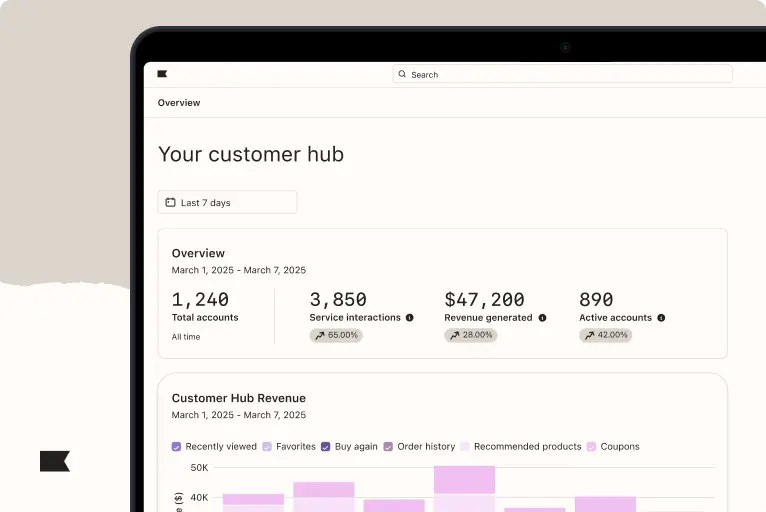
Klaviyo’s 2025 online shopping report: how to meet the consumer where they scroll
Consumer shopping behaviours are shifting faster than marketing teams can test. Budgets are tightening. And, the pressure to deliver ROI across every channel is intensifying. While strategies have to evolve, time and resources remain finite—especially for lean teams balancing brand, performance, and retention goals.
To help, Klaviyo is putting data in the hands of marketers so they can make better, more strategic decisions. We surveyed 2,000 consumers across the U.S., U.K., Australia, and New Zealand to uncover how people are actually shopping today: how they browse, when they buy, and what makes them engage. Because while personalisation and omnichannel coordination have become non-negotiables, not every team has the data—or hours—to map the modern journey themselves.
This research is designed to close that gap. It translates emerging behaviour into actionable insights: where discovery happens, which channels drive trust, and how generational tone preferences can make or break engagement.
These aren’t trends. They’re behavioural mandates. And they should change the way marketers operate.
Consumers are channel-hopping, but not aimlessly
Today’s shopping journey doesn’t happen in one place. It flows across channels. 77% of global consumers shop for non-essential items across 3–4 different channels, on purpose.
Whether scrolling social for ideas, comparing on a mobile app, or buying in-store, shoppers are creating their own omnichannel experiences.
The implication for brands? A disconnected strategy isn’t just a missed opportunity—it’s a risk. Consistency, coordination, and timing are no longer differentiators. They’re expectations.
Social media is where consumers scroll—not where they buy
Let’s put this to rest: social media drives discovery, not conversion. For beauty and fashion, for example, 1 in 5 consumers use social media to find new products (23% and 19% respectively). But when it’s time to buy? In-store and company websites win out.
The biggest takeaway? If your social strategy is designed to convert, you’re probably measuring the wrong outcome. Instead, use it to prime demand, then close the loop through better-timed, better-placed follow-ups on email, SMS, or even WhatsApp.
Email is still the MVP—when it’s done right
Email remains the most trusted channel for brand communication. Consumers overwhelmingly prefer email to stay in touch with their favourite brands in categories like fashion (38%), electronics (38%), travel (40%), and beauty (40%).
But preference isn’t the same as performance. Email earns trust, but timing earns clicks. Our research shows email engagement spikes in the morning (37%), while in-app messages and social media interactions peak in the evening. For omnichannel marketers, coordination is everything.
Gen Z wants brands that are human, not corporate
Younger generations have rewritten the rules of engagement. Nearly 30% of Gen Z consumers are more likely than average to engage with brands that use puns, emojis, or playful language in SMS.
They also game the system: 67% of Gen Z and 63% of Millennials say they intentionally ignore messages in one channel hoping for a better offer in another.
The implications are serious: consistency across channels is no longer optional. The same customer is watching how you show up on email, text, and social—often at the same time.
Loyalty is earned at the edges
Consumers are inundated, skeptical, and increasingly willing to walk away. But they’re also open—to convenience, personality, and personalisation. That’s why some of the strongest signals we saw weren’t just about where people shop, but how they want brands to behave.
- 61% of consumers actively subscribe to communications from 3–8 brands, and 9% subscribe to more than 15.
- Women are 2.5x more likely than men to subscribe to over 15 brands, signaling a higher appetite for personalised content and promotions.
- Nearly 2x as many consumers say they’d prefer AI to remember their preferences than share them with a store associate.
That tells us that loyalty doesn’t come from aggressive discounting or generic outreach—it comes from relevance, consistency, and respect.
What it all means for marketers
We’re entering a new age of consumer connection. Not just omnichannel, but omni-intent. Customers move seamlessly from social scroll to cart abandon to inbox check to store visit. Brands that win will be the ones who move with them—coordinating tone, timing, and tactics across every touchpoint.
At Klaviyo, we believe the future belongs to marketers who think like systems architects and storytellers at once.
Great marketing isn’t just multichannel. It’s synchronised, strategic, and deeply human.

Related content

Klaviyo has achieved Platinum Technology Partner status with Shopware, strengthening a shared commitment to deliver real-time data, omnichannel marketing, and faster growth for merchants through a powerful, unified integration.

Klaviyo launches Marketing Agent and Customer Agent at K:BOS 2025, advancing its AI-first B2C CRM to unify data, marketing, and customer service.

Klaviyo Customer Hub: a one-stop hub for orders, returns, and rewards. See how it transforms service into revenue opportunities.